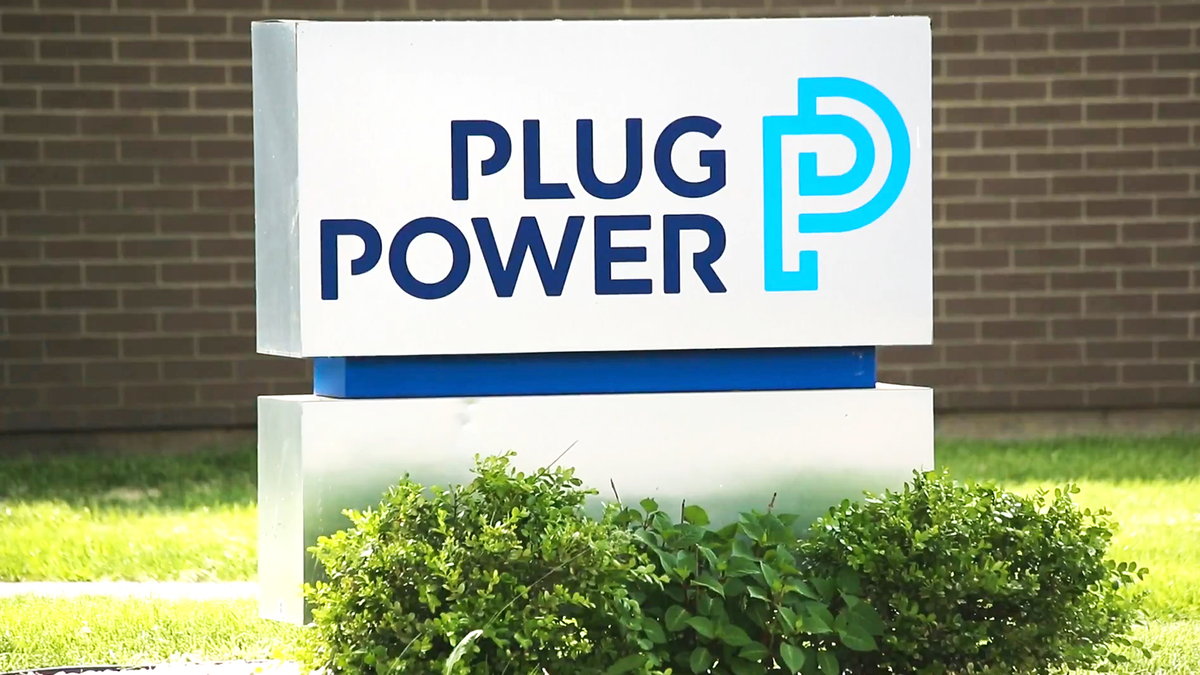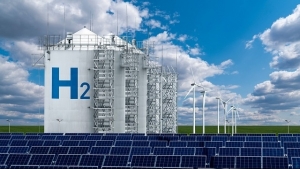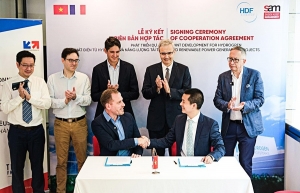Escalating national hydrogen production and exports
Vietnam has a decent amount of renewable energy sources but less solar potential than nations such as Australia, Morocco, and Chile, which prefer to export green hydrogen. In Southeast Asia, Vietnam’s wind potential is considered the best. According to our early evaluation, the price trend value of green hydrogen in Vietnam is greater than for many possible rivals.
 |
| Nguyen Anh Dung-Senior officer German Agency for International Cooperation |
In 2040, the price of green hydrogen in Vietnam is anticipated to be between $1.75 and $2 per kg, compared to $1.25 to $1.5 in Morocco, Australia, Chile, and South Africa. Moreover, Vietnam’s land resources are scarcer than many other nations.
The global shift to purchasing environmentally friendly hydrogen is gaining momentum. Numerous nations have identified growth prospects, including those with the ability to export green hydrogen, such as Vietnam, and nations that import petroleum.
In Europe, the Middle East, India, the United States, and Canada, dozens of green hydrogen generation facilities are now in development. By 2025, it is anticipated that 600 projects will become operational in Europe alone. Numerous nations have begun to adopt strategies to expand the local green hydrogen market and the export industry to rapidly ascend the global value chain.
Renewable energy sources play an important role in developing green hydrogen, accounting for 60 per cent of the total cost of environmentally friendly hydrogen generation. Vietnam has an abundance of renewable energy sources, including wind and solar. As a result of suitable policies of assistance and encouragement, the country has become Southeast Asia’s leader in the development of renewable energy. Vietnam has the capacity to become a leading exporter of green hydrogen in the area, targeting prospective markets in Asia and the global market.
Europe is estimated to be one of the areas that will be a net importer of green hydrogen in the future. To fulfil net-zero goals in Europe, the EU developed a hydrogen strategy for carbon neutrality in 2020. From now until 2024, at least one million tonnes of green hydrogen will be generated annually, and about 10 million tonnes will be generated by 2030.
The era between 2030 and 2050 is seen as the harvest stage in Europe, during which time green hydrogen will be heavily developed and replace fossil fuels. Germany, in particular, is a leading nation in this area. The annual demand for green hydrogen in Germany will reach 3.3 million tonnes by 2030 and 11.6 million tonnes by 2040. By 2050, Germany plans to replace between 55 and 95 per cent of its domestic gas consumption with green hydrogen using a framework of 38 incentive schemes.
Japan and South Korea are the two major hydrogen markets in Asia that need to be focused on in the near future. Japan was the first nation in the world to establish a basic hydrogen strategy, in 2017, with several primary objectives to stimulate research, technological development, and market creation across sectors. Also, Japan is estimated to need three million tonnes of hydrogen annually by 2030, 9.6 million in 2040, and roughly 20 million in 2050, with 17 million tonnes imported.
South Korea announced its Hydrogen Economy Roadmap in 2019, which outlines several national objectives. According to the plan, this nation will need around two million tonnes of green hydrogen per year by 2030, 3.6 million tonnes per year by 2040, and more than 20 million by 2050, of which 16 to 17 million are projected to be imported.
Because of its relative proximity to both countries, Vietnam should focus more on the Korean and Japanese markets. The estimated shipping distance to South Korea is about 5,000km, and to Japan it is over 5,700km, which is insignificant compared to many other nations.
To accomplish hydrogen exports, Vietnam must define medium to long-term policies and objectives for the green hydrogen sector, as well as construct a viable green hydrogen supply chain structure that meets national and international technical requirements. To assist Vietnam’s socioeconomic development in the future, it is essential for the government to establish an effective policy structure to promote the growth of the green hydrogen industry.
 | Germany rolls out world's first hydrogen train Germany on Monday (Sep 17) rolled out the world's first hydrogen-powered train, signalling the start of a push to challenge the might of polluting diesel trains with costlier but more eco-friendly technology. |
 | Hydrogen fuel cell maker Plug Power to expand operations with SK Group Hydrogen fuel cell maker Plug Power, the leading provider of comprehensive hydrogen fuel cell turnkey solutions, is signalling interest in potential markets, including Vietnam, South Korea, and China through a joint venture with SK Group. |
 | TGS Green Hydrogen to develop new plant for nearly $850 million TGS Green Hydrogen from Germany plans to develop a green hydrogen plant in the Mekong Delta province of Ben Tre with the total investment capital of VND19.5 trillion ($847.8 million). |
 | HDF Energy and Saigon Asset Management develop hydrogen power A signing ceremony for the corporation agreement between Hydrogène de France SA (HDF Energy) and Saigon Asset Management Corporation (SAM) for the development of a chain of hydrogen and renewable energy generation projects in Vietnam was held on July 25 at the French Embassy. |
What the stars mean:
★ Poor ★ ★ Promising ★★★ Good ★★★★ Very good ★★★★★ Exceptional
Related Contents
Latest News
More News
- CME Solar strengthens position in Vietnamese renewables (December 30, 2025 | 11:21)
- Self-care signals shift towards sustainable healthcare (December 30, 2025 | 10:12)
- GreenYellow marks five years of clean energy growth in Vietnam (December 26, 2025 | 15:51)
- TCP Group partner with VNUS to launch water conservation project (December 25, 2025 | 14:00)
- Heavy industries set for pilot greenhouse gas quotas (December 25, 2025 | 10:00)
- Swedfund invests in MSME growth and climate action in Vietnam (December 19, 2025 | 11:42)
- GreenYellow brings solar energy to light up remote schools in Tuyen Quang province (December 19, 2025 | 08:00)
- Charge+, Grab partner to develop EV charging network in Vietnam (December 18, 2025 | 17:11)
- Linking sci-tech and innovation to Vietnam’s net-zero future (December 18, 2025 | 14:31)
- Driving double-digit growth through green and circular transformation in Vietnam (December 17, 2025 | 09:00)

 Tag:
Tag:



















 Mobile Version
Mobile Version